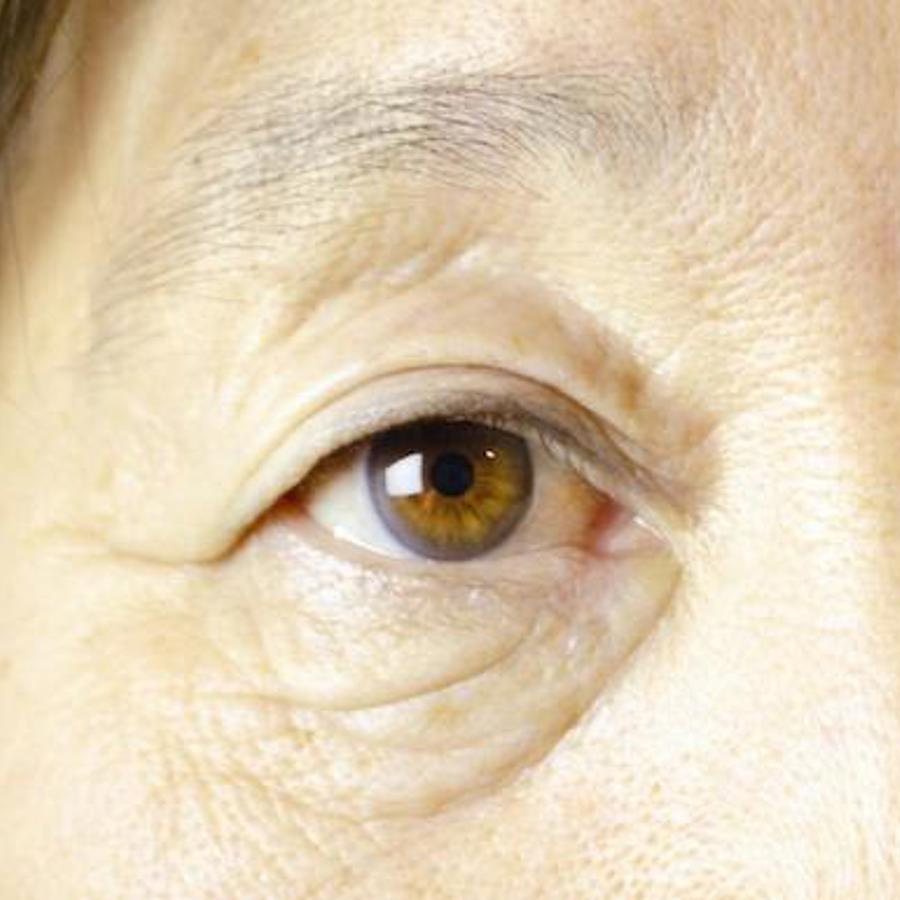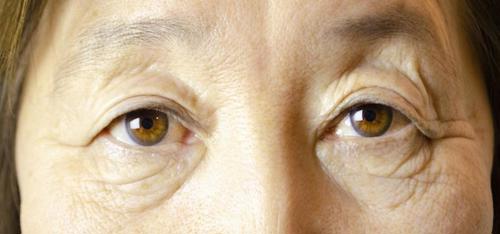
How do the genes for uncommon eye colors work?
June 23, 2005

- Related Topics:
- Eye color,
- Pigmentation traits,
- Classical genetics,
- Punnett squares,
- Common questions
A curious adult from West Virginia asks:
“Has any progress been made in explaining eye colors other than brown, blue, and green? I’ve seen dozens of explanations of how the GEY (EYCL 1) and BEY2 (EYCL 3) genes are supposed to work, all with the disclaimer that this model doesn’t explain colors such as hazel, grey, or black (not to mention violet, yellow, or very pale blue). Are the pigments responsible for some of these colors thought to be related to specific genes? Can there be more than two alleles for a gene, such as green, hazel, or blue? Has anybody studied the heritability of unusual eye colors?”
Editor’s note (7/20/2021): Some information in this article is out of date. Scientists now know that eye color is a complex trait, influenced by at least 50 different genes.
The short answer is that we don’t know. Unfortunately, very little work has been done on eye colors other than blue, green, and brown. For this answer, I'll focus on where hazel eyes might fit into the picture. Hopefully you'll get an idea of how quickly genetics can get too complicated to figure out easily.
So why don't we know more about the genetics of hazel eyes? Part of the reason comes from the difficulty of defining “hazel.” In other words, when is hazel actually brown? Or green?
Another reason is that the inheritance is probably complicated, and not as "simple" as blue, green, and brown eyes.
So how might something like hazel eyes work? No one knows for sure, but I'll discuss some possibilities. But before that, it is important to go into more about eye color.
Eye color comes from genes that make melanin
Brown, green and blue eye color comes from a pigment called melanin. Brown eyes have a lot of melanin in the iris, green eyes have a medium amount, and blue eyes have little or no pigment.
Two genes, BEY2 and GEY, work together to make brown, green, or blue eyes. Each gene comes in two versions or alleles.
One form of BEY2 makes lots of melanin (and is usually referred to as B) while the other form makes only a little (b). One form of GEY makes some melanin (G) while the other makes only a little (b).
So how do you get eye color from all of this? If you have B you get brown eyes, G (but no B) you get green eyes and if you only have b, then you get blue eyes.
Most likely, hazel eyes simply have more melanin than green eyes but less than brown eyes. There are lots of ways to get this level of melanin genetically.
It may be that hazel eyes are the result of genes different from GEY and BEY2. Something like HEY for hazel. And maybe HEY is a bit like BEY2 and GEY in that it comes in two forms -- one that makes enough melanin for hazel eyes (H) and one that makes little or no melanin (b).
If this were true, the scheme for eye color would have to be changed. In the new scheme, you would have brown eyes if you had B, hazel eyes if you had H but not B, green eyes if you had G but not H or B and blue eyes if you only had b.
My gut tells me this probably isn't the answer. Even though this sounds pretty complex, it seems like it wouldn't be that much harder to tease out than green and brown eyes.

Another possibility is a variation on this theme. Maybe hazel eyes come from different versions of BEY2 or GEY. I said at the outset that there were two versions of each gene. But what if there were more? What if there were many versions that result in the various shades of color we see?
This is certainly plausible and some recent research suggests that this might be part of the story. But again, we don’t know. I would think the genetics again would be easy enough that it would have been figured out by now.
Another possibility is that there may be modifier genes. These are genes that would affect how much melanin BEY2 or GEY make. For example, you could get a gene that has GEY make more melanin or BEY2 make less. The end result would be hazel eyes.
What might this inheritance pattern look like? Pretty complicated.
Gene combinations and eye color
Before launching into this, we need to remember one more thing. We have two copies of most of our genes -- one from mom and one from dad. What this means is that there are actually a number of ways of combining genes to end up with various eye colors.
For brown, green, and blue eyes, the possibilities using BEY2 and GEY are:
|
BB bb |
Brown |
|
BB Gb |
Brown |
|
BB GG |
Brown |
|
Bb bb |
Brown |
|
Bb Gb |
Brown |
|
Bb GG |
Brown |
|
bb GG |
Green |
|
bb Gb |
Green |
|
bb bb |
Blue |
Now imagine a modifier gene that can give you hazel eyes by having GEY make more melanin. This gene comes in two flavors -- M increases the amount of melanin GEY makes and m has no effect. As you can see, it is possible to have brown eyes and have a B and a b version of the BEY2 gene. Or green eyes and have a G and a b version of GEY. These people are carriers for blue eyes.
OK, so to have hazel eyes you need a G from the GEY gene and an M from our modifier gene. M would not give hazel eyes with b. Why? Because b is really a broken version of G -- b makes so little melanin because it doesn't work. M can't fix a gene -- it can only affect how much melanin a working GEY gene makes.
So what are the genetic combinations that give various eye colors using M? To simplify things, we'll ignore BEY2 and just concentrate on green, blue, and hazel.
|
GG MM |
Hazel |
|
Gb MM |
Hazel |
|
GG Mm |
Hazel |
|
Gb Mm |
Hazel |
|
GG mm |
Green |
|
Gb mm |
Green |
|
bb MM |
Blue |
|
bb Mm |
Blue |
|
bb mm |
Blue |
Inheritance of eye colors
Now we're finally ready to look at some examples of how hazel eyes might be inherited. First, let’s imagine a blue-eyed parent with bbmm and a hazel-eyed parent with GGMM.
The blue-eyed parent can only give bm to his children and the hazel-eyed parent can only give GM. So, all of their children will be GbMm or hazel-eyed carriers for green and blue eyes.
Let's look at a more interesting example: a blue-eyed parent, bbMM, and a green-eyed parent, GGmm.
This time, the blue-eyed parent can only give bM. The hazel-eyed parent can only give Gm. The end result is all GbMm or hazel eyes! A blue and a green-eyed parent will have all hazel-eyed kids.
This is one of the reasons I like the modifier gene explanation so much. It can help explain how green and blue-eyed parents might have hazel-eyed kids.
Finally, let's tackle a tough one. Imagine two hazel-eyed parents GbMm. What would their kids look like? For this, we need to bring out the old Punnett square.
The way a Punnett square works is you make a table. You put all the possible gene combinations for one parent on top, and all the gene combinations for the other parent on the side. For our example, you'd get something like this:
|
|
GM |
Gm |
bM |
bm |
|
GM |
|
|
|
|
|
Gm |
|
|
|
|
|
bM |
|
|
|
|
|
bm |
|
|
|
|
The next step is to match up squares. This will figure out all possible combinations and how likely they'll be.
|
|
GM |
Gm |
bM |
bm |
|
GM |
GG MM |
GG Mm |
Gb MM |
Gb Mm |
|
Gm |
GG Mm |
GG mm |
Gb Mm |
Gb mm |
|
bM |
Gb MM |
Gb Mm |
bb MM |
bb Mm |
|
bm |
Gb Mm |
Gb mm |
bb MM |
bb mm |
From this the results are that there is a 4 in 16 chance for blue eyes, a 3 in 16 chance for green and a 9 in 16 chance for hazel. Even though this looks awful, it might be possible to figure things out if this were all that was involved.
Now imagine adding the brown gene to the mix. And another modifier that decreases melanin from BEY2 instead of increasing melanin from GEY. And now sprinkle in different modifier genes that increase or decrease melanin made by different amounts. And modifier genes that affect the modifier genes.
In reality, eye color may be a result of all of these ideas -- hazel eye color genes, modifier genes, and different versions of BEY2 and GEY! As you can see, it all gets complicated pretty quickly. We should be thankful that green, blue, and brown are as simple as they are.

Author: Dr. Barry Starr
Barry served as The Tech Geneticist from 2002-2018. He founded Ask-a-Geneticist, answered thousands of questions submitted by people from all around the world, and oversaw and edited all articles published during his tenure. AAG is part of the Stanford at The Tech program, which brings Stanford scientists to The Tech to answer questions for this site, as well as to run science activities with visitors at The Tech Interactive in downtown San Jose.
 Skip Navigation
Skip Navigation
